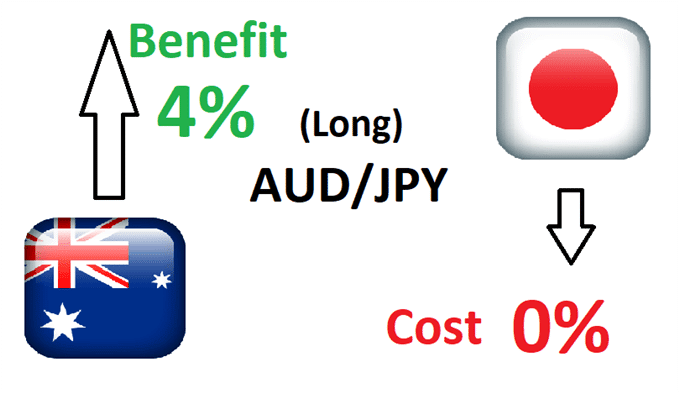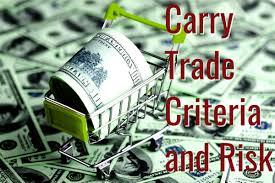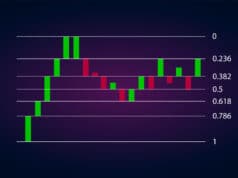Interest rates differentials are catalysts that sway sentiments and play in the trillion-dollar forex market. Whenever central banks cut and raise the benchmark, the net result is usually wild swings as traders jostle for positions.
Given that global currencies come with different prime rates present a unique opportunity for investors to profit from. A currency carry trade is a popular strategy leveraged in the forex market that depends on differences in the lending charge between legal tenders.
A currency carry trade is a concept whereby a person borrows money from a low-yielding legal tender pegged with a low annual percentage charge. The amount borrowed is invested in a high-yielding fiat, all in the effort of profiting from the high benchmark tariff on offer.
With this strategy, people try to collect daily interest disbursements from the high-yielding fiat invested, in addition to price appreciation that might come into play. In this case, the lower-yielding fiat is dubbed the funding tender as it provides capital at a low cost to invest in a high yield dubbed the target fiat.
Rollover, on the other hand, is a provision whereby brokers are tasked with the responsibility of extending the settlement date, thus allowing people to profit from bank rates payments emanating from the target fiat.
Consequently, the broker will debit or credit a trading account with outlays based on the benchmark rate. The settlement takes place regardless of the lending tariff differential being positive or negative.
Key components
Returns on currency carry trades depend greatly on the magnitude of the borrowing charge differential between two legal tenders. Even if the prevailing exchange rate was to remain the same over a prolonged period, people would still be able to profit from interest payments on target legal tender prime tariff increases.

The bigger the difference in lending rates between the funding and target currencies, the higher the likelihood of generating more returns given the low borrowing costs with the funding fiat and more payments with the target fiat.
However, it is important to remember that central banks do tweak the benchmark tariff from time to time, a move that could significantly alter the returns that one receives. Such changes also pose the biggest risk to this strategy.
Exchange rate appreciation/ depreciation
Optimum returns with this strategy are guaranteed whenever the price of a pair in which a currency carry trade is opened appreciates. When one is long, and the price appreciates, total returns include interest payments and the unrealized profit due to exchange rate appreciation. However, the overall profit will only be realized once the position is closed.
In addition, it is also possible to lose money with this strategy. This is especially the case whenever the target fiat depreciates when one is long, such that the losses incurred from the open position wipe out the returns accrued from interest returns.
How it works
The first step to placing a carry trade involves finding a legal tender backed by a low-lending rate. The lower, the better, as it makes it easy to borrow at the lowest cost possible. In return, one must also find a high-yielding currency that can be paired with the low-yielding one.

The amount borrowed on low yield is in return invested in a high yield fiat. In addition, one must also focus on liquid legal tenders to take advantage of price appreciation when the two are paired.
The carry trade strategy was extremely popular between 2000 and 2007. During this period, the Australian dollar and the New Zealand dollar came backed with some of the highest lending charges.
In return, the Japanese yen was the lowest in the market. Consequently, most people opted to borrow in yen and invest the resulting amount in AUD or NZD for higher interest payments. In return, they entered long positions on AUDJPY pair or NZDJPY.
Example
Consider the AUD/JPY pair whereby the bank lending rate in Australia is 4% and in Japan zero. A person looking to profit from currency carry trade will look for an ideal time and price to enter along with the AUDJPY pair.

In addition, one will look to borrow in yen given the zero prime rate and use the money to invest in the high-yielding Australian dollar. Once an investment in a high-yielding fiat is made, one will accrue interest returns in addition to potential returns on the underlying AUD/JPY price appreciating.
Risks to watch out for

One of the biggest risks that people looking to profit from this strategy should always pay close attention to relates to bank rate changes. If a country behind the target legal tender decides to cut the underlying benchmark tariff, there is always a likelihood of seeing reduced returns. This is partly because the cut would result in a reduction in interest disbursements.
Interexchange price fluctuations could also significantly reduce the returns that one generates from this strategy. If a person is long and the price starts to tank, the position will accrue losses that the payments from the strategy might not be able to offset.
Bottom line
A currency carry trade is a trading strategy that presents a unique opportunity to generate profits from two avenues on a single disbursement. In addition to profiting from currency price appreciation in case of a long position, one is also entitled to overheads emanating from differences in the benchmark rate between two legal tenders.
The strategy works best whenever central banks are planning to increase bank tariffs. However, it is important to manage risk adequately as price fluctuations can significantly eat into gains from interest disbursements. Additionally, benchmark cuts targeting the target fiat can also reduce the returns that one accrues through interest payments.




